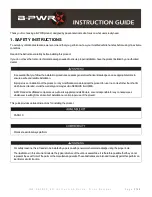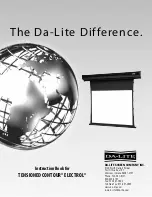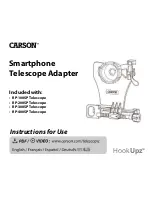
• Pay attention to the operating instructions and
keep them close to the battery.
• Work on batteries must only be carried out by
skilled personnel!
• Use protective glasses and wear safety
clothing when working on batteries.
• Adhere to the current accident prevention
rules in the country where the battery is used or
EN 62485-3, EN 50110-1.
• No smoking!
• Do not expose batteries to naked flames,
glowing embers or sparks, as it may cause the
battery to explode.
• Avoid sparks from cables or electrical apparatus
as well as electrostatic discharges.
• Acid splashes into the eyes or on the skin
must be washed immediately with an abundance
of clean water. After abundant flushing
consult a doctor immediately!
• Clothing contaminated by acid should be
washed in water.
• Risk of explosion and fire.
• Avoid short circuits: do not use non-insulated
tools, do not place or drop metal objects on
top of the battery.
• Remove rings, wristwatches and articles of
clothing with metal parts that might come into
contact with the battery terminals.
• Electrolyte is highly corrosive.
• In the normal operation of this battery a
contact with acid isn’t possible. If the cell
containers are damaged, the immobilized
electrolyte (absorbed in the separator) is
corrosive like the liquid electrolyte.
• Batteries are heavy. Ensure secure installation!
Use only suitable handling equipment.
• Lifting hooks must not damage the cells,
connectors or cables.
• Do not place batteries in direct sunlight
without protection. Discharged batteries can
freeze. For that reason, always store in a
frost-free zone.
• Dangerous electrical voltage!
• Avoid short circuits: NexSys batteries are
capable of high short circuit currents.
• Caution – metal parts of the battery are always live:
do not place tools or other objects on the battery!
• Pay attention to the hazards that can be
caused by batteries.
1. Safety
Any work carried out on the battery must comply with
EN 60079-19 and EnerSys
®
operating instructions. All defective
parts must be replaced by EnerSys supplied parts. No attempt
should be made to repair faulty parts. Failure to adhere to this
will render the warranty and certification null and void.
Always remember that the battery is a source of power. Even
when fully discharged, sufficient energy remains in the battery
to cause serious damage.
The battery is designed to be used within the intended
surrounding area conditions.
The materials used are not known to react with any of the
explosive atmospheres with which they may come in contact
with. If unsure, please contact EnerSys.
The apparatus does not cause injury or harm when used as
specified in this manual and the standard NexSys
®
CORE
battery manual.
The apparatus does not produce ignition-capable electrical
sparks or arcs when used in compliance with this instruction
manual. The apparatus has been designed not to produce
potential ignition sources from electromagnetic, acoustic,
optical or other external energy sources.
Individual cells contain sulphuric acid. These cells are
constructed from materials that are resistant to acid attack.
Follow the safety practices below:
• Never charge NexSys
®
CORE ATEX battery in a zoned
controlled area unless special conditions, defined by
equipment manufacturers, are met.
• Never disconnect a battery under load in a zoned area.
• Never open the battery cover (if present) in a zoned area.
• Always use certified DC plugs for connection to the battery.
• Never use the battery if damaged or bare cables are visible.
• Never use the battery if the DC plugs are damaged.
• Never attempt to service the battery: call your
recommended authorised service centre.
• Any servicing carried out must be in accordance with ATEX
directives.
• Never mix cells of different types or capacities within one
battery.
2. Service
Your local authorised service engineer provides help and
support. This handbook gives guidelines of a general nature;
the engineer will help you to interpret your needs in relation
to your particular requirements. Your engineer can answer the
questions that are beyond the scope of this manual. Please do
not hesitate to call your local service centre if you have any
questions relating to your battery.
3. Handling
As NexSys
®
CORE ATEX batteries are heavy, always use the
appropriate equipment when attempting to handle batteries.
When lifting and handling NexSys
®
CORE ATEX batteries,
use the appropriate, approved lifting equipment and keep
the battery in an upright position. Due to the wide range of
types of electric vehicles, of designs of battery containers,
of equipment used and in methods of battery changing, it is
not possible to give detailed instructions on the procedures
to be followed when changing the batteries on a specific
electric vehicle. The manufacturer of the vehicle or the battery
changing equipment must supply the correct method and
procedure.
4. Taking delivery of your battery
Remove all packaging and carefully examine the complete
battery to ensure that there is no physical damage. Should
the battery not be put in service immediately, please refer to
storage guidelines (section 9).






















